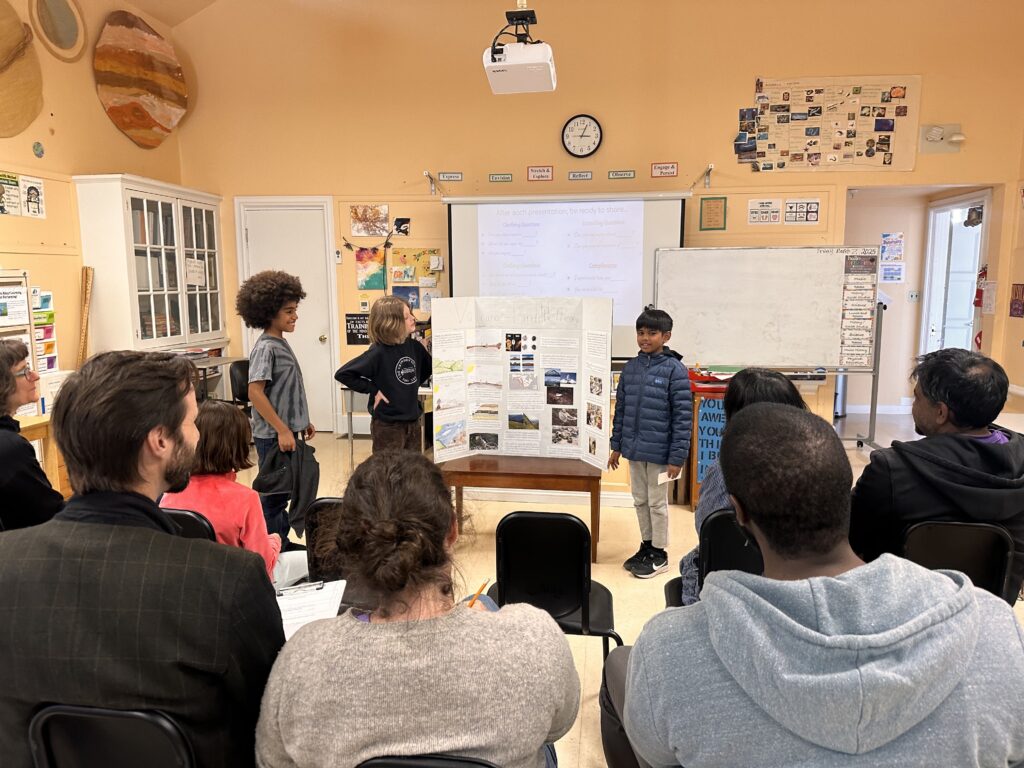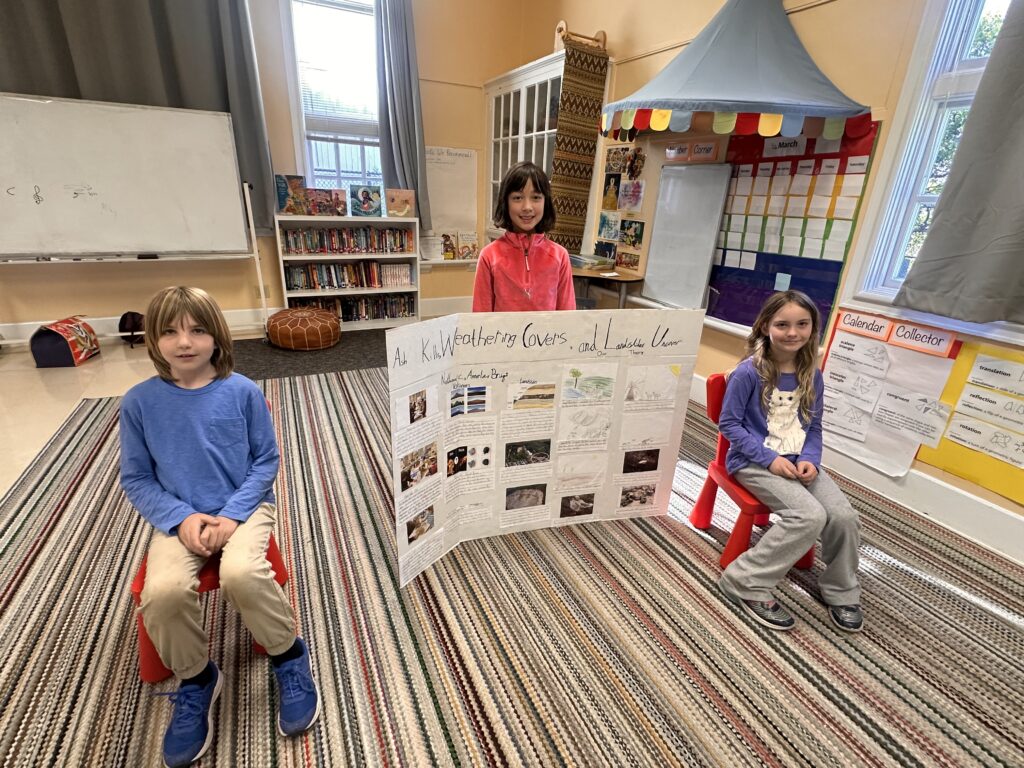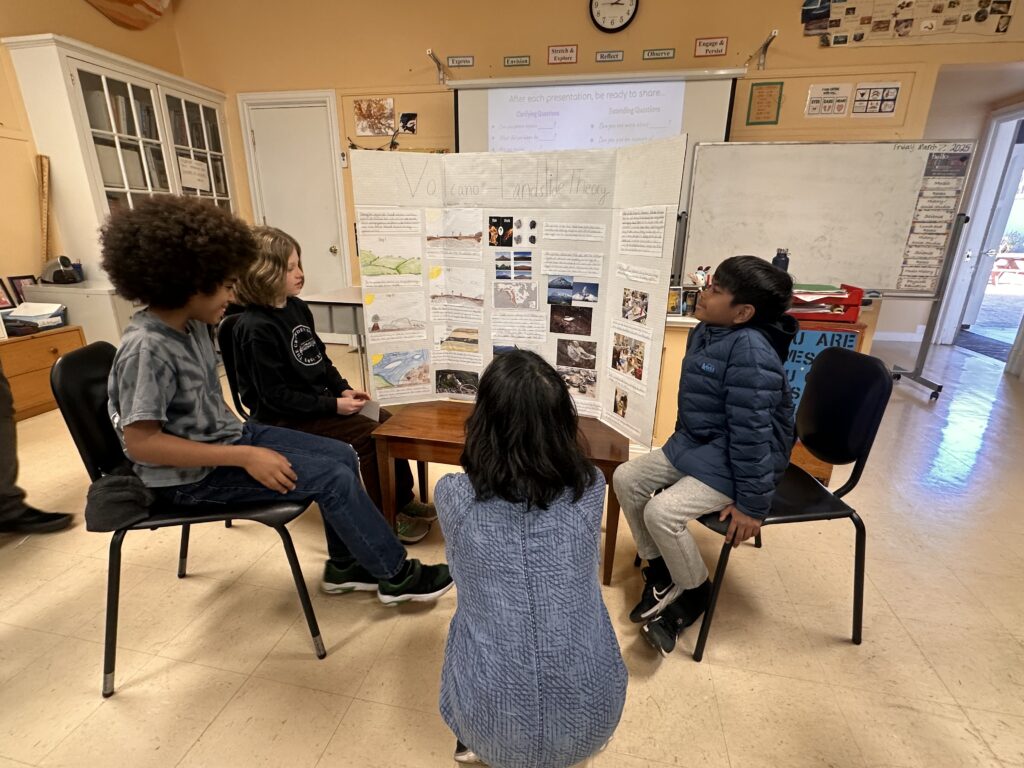In Mr. Powles’ third and fourth grade Earth science unit, students investigated features and processes of the Earth’s surface. The anchor phenomenon for this unit is the Ashfall Fossil Beds, an archaeological site where, 11 million years ago, prehistoric animals like rhinoceros, camels, and birds mysteriously died and were buried. Since creating their initial explanations, students carried out a serious of investigations and gathering evidence to better explain how these animals died, were buried, and millions of years later got discovered.
Investigating Volcanic Eruptions
Students first explored the rapid process of volcanic eruptions. They mapped the location of Earth’s volcanoes to identify patterns and evaluated the distance of six prehistoric volcanoes from the Ashfall Fossil Beds in Nebraska. Through working with models, students learned that there are two types of volcanoes—one with thick, explosive lava and one with thin, flowing lava. They considered the type of lava each ancient volcano had and how long ago it erupted to determine which volcano may have caused the death of animals.
Exploring Gradual Earth Processes
More recently, students explored gradual Earth processes that change rocks and land over time. To help them explore, students decided the class should create model mountains. Students designed plans for what to do with their models in order to gather evidence for how mountains change over time. In groups, students decided to expose their mountains to different things like wind, water, and trees to see how they would change. Having collected evidence, students researched weathering, erosion, and deposition to help explain what they noticed with their group’s mountain. Then, students worked together on two more models to help demonstrate weathering, erosion, and deposition and to help solidify their understanding of these processes.
Connecting Their Investigations
Over the next few weeks, students continue their Earth science explorations. With each new investigation, students will connect their learning back to their developing explanations of what happened at the Ashfall Fossil Beds. At the end of the unit, students will present their theories using evidence from what they have learned!
The Ashfall Fossil Beds
At the start of the unit, students were introduced to the discovery of a prehistoric rhinoceros fossil at a farm in Nebraska. Over the years, excavation revealed the fossils of other animals, including horses, camels, birds, and turtles. This sparked a series of questions:
- How did the prehistoric rhinos and other animals die?
- Why did it take 11 million years to find their fossils?
- How were these fossils eventually uncovered?
Students worked in teams to refine their evidence-based theories on these questions. They communicated their findings through poster boards and oral presentations, with parents invited to join them for their final presentations! This journey was a fascinating exploration of Earth’s processes, and the young scientists were excited to share their findings with their families and the community.




